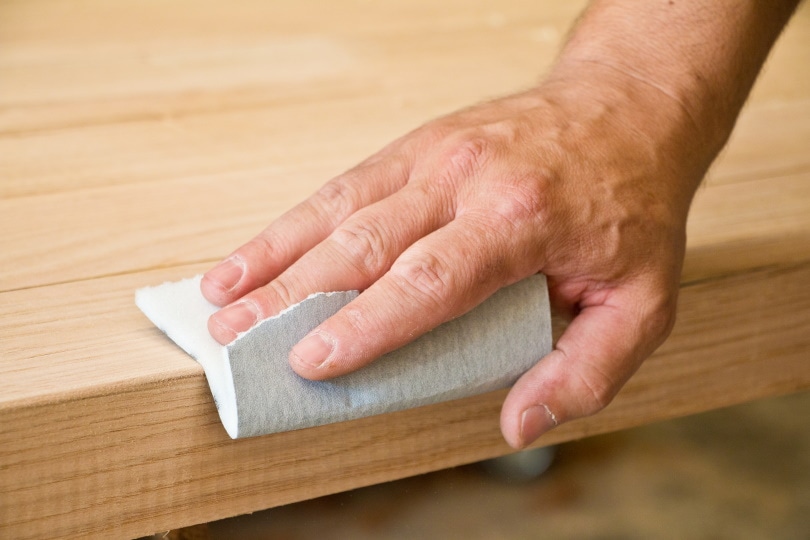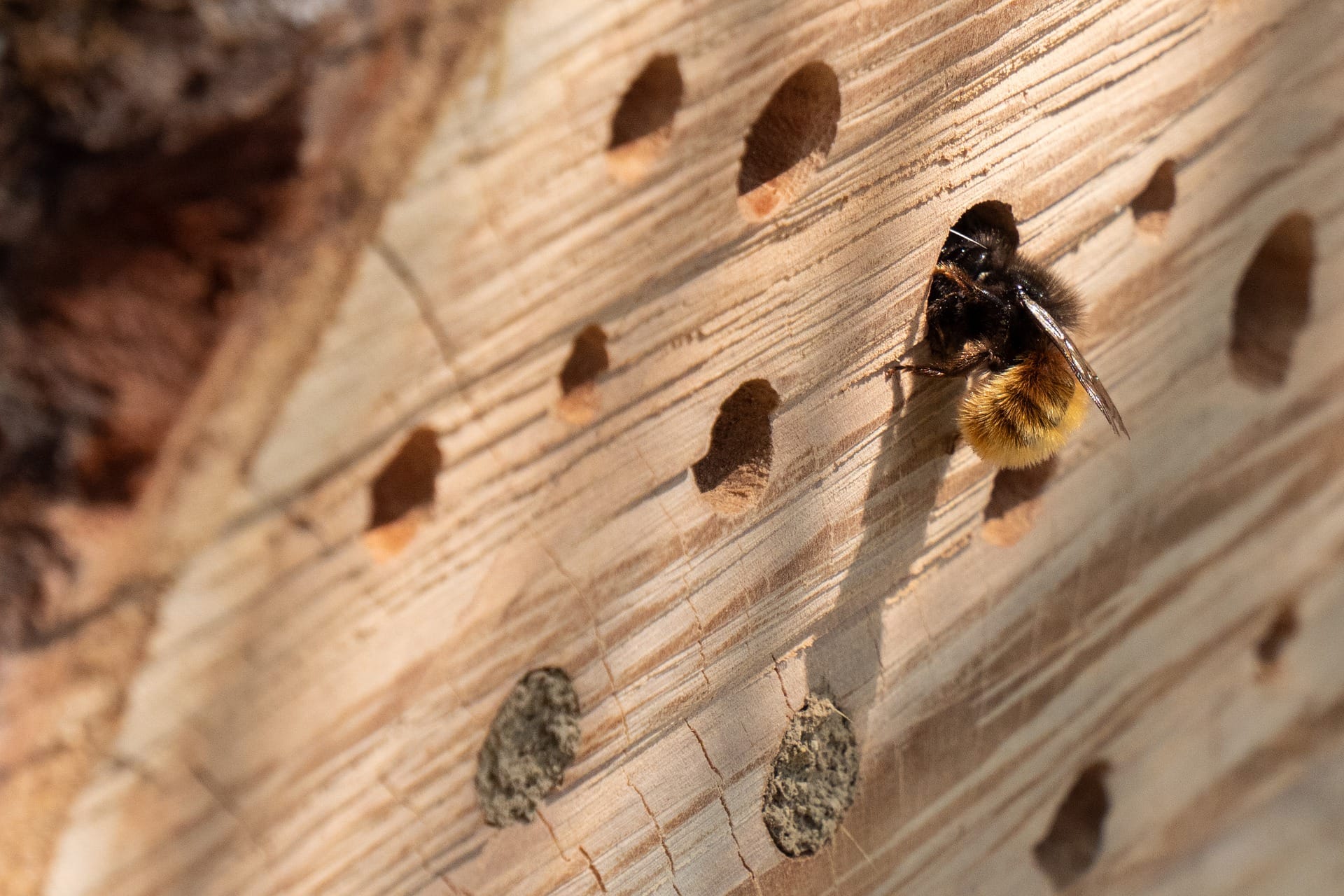How to Make a Bee House with Bamboo in 3 Steps
-
- Last updated:

A simple craft project is way more satisfying when you create something extra useful around the home. With a homemade bamboo bee house, that’s precisely what you get!
These simple additions to your backyard are fantastic helpers for landscapers, attracting solitary bees to pollinate plants. We’ll show you how easy it is to enjoy all the benefits of basic bee-keeping with this three-step guide to making a bee house with bamboo.

How to Make a Bamboo Bee House
A standard bamboo bee house consists of a 6-inch deep wood box full of 6-inch long bamboo stalks, creating a grid of various-sized holes for bees to inhabit. The box hangs on a wall or other sturdy location to attract solitary bees, such as mason bees, which then lay their eggs and go through their lifecycle with the bee house as their base.
Tools and Materials
- Hammer
- Saw
- Finishing nails
- 1×6 pine or cedar board
- Wood glue
- Small bamboo stalks of various widths between 4-10 mm
- Hanging hook
How to Make a Bamboo Bee House in 3 Steps
1. Build a Simple Box

Start building the box by cutting your 1×6 board into four pieces, two measuring 6 inches long and two measuring 4 inches long.
Apply wood glue to the edge of a 4-inch wood piece and position it against the side of a 6-inch section to create an L-shape. Use three finishing nails to join the two pieces together, keeping the face of the 4-inch piece flush with the edge of the 6-inch piece.
Repeat the process with the other 4-inch and 6-inch pieces of wood.
Fit the L-shaped pieces together to form a square box. Apply wood glue to the edges and nail three finishing nails into the last two sides.
All four corners should now be glued and tacked in place.
2. Fill Box with Bamboo Segments
Cut the bamboo stalks into 6-inch long segments, matching the depth of the bee house.
One end of the bamboo needs to be sealed to prevent pests from coming on the backside of the bee house. You can cut the bamboo so that one end is open and the other is closed. Cut the bamboo stalk at the node (the joint), which is sealed, and at a point between nodes, which will be hollow.
Because you need to use narrow pieces of bamboo, you may not have 6 inches of space between nodes. If any of the stalks are closed off, use a long drill bit to clear out the hole so that the bees can fit inside.
If you have a stalk that is open on both ends, you can still use it. Plug one end with some clay. Make sure the rest of the tube is clear and clean for the bees to use.
Fill the bee house with bamboo stalks. Do not glue them in place as you will need to replace them each year to prevent mold and damage.
3. Hang the Box

Attach your hanging hook to the back of the bee house and hang it on a wall of your shed or some area near your garden. Do not suspend it from a rope because bees don’t like a swinging nest.

Tips for Attracting Bees
Solitary bees that don’t use hives are prime candidates for bee house residents. The structure mimics the various holes and nooks that cavity-nesting bees use. Despite the premium dwellings, bees need more resources if you want them to thrive in your bee house.
Here are some tips on making your bamboo bee house as attractive and hospitable as possible:
- Supply a shallow pool of water filled with pebbles where bees can land and drink
- Place the box near an area that collects muddy clay, as many bee species use it to build their nest
- Keep the space around the bee house free of pesticides and other chemicals
- Provide plenty of flowers nearby for pollination
- Position the box facing south or southeast to catch the morning sun and help the bees warm up
- Raise the bee house to eye level to keep predators at a distance and give you a better vantage point
- Clear foliage around the bee house to leave an unobstructed path for the bees
- Monitor the bee house for moisture regularly
- Give your bee house a 2–3-inch overhang to help keep the bamboo dry
The bamboo also needs to be changed every year—the main drawback to bamboo is its inability to drain moisture and susceptibility to mold, so you can’t let it sit year after year and expect the bee population to last.
Take down your bee house for the winter months as the bees lie dormant. Store it in a dry, unheated area such as a garage or basement until the following year. Set up a fresh bamboo bee house the next nesting season so that the emergent bees move from the old bee house and into the new one to build their nest.
What Kind of Bees Use a Bamboo Bee House?
Native solitary bees like mason bees and leafcutter bees are the most common residents of any backyard bee house. Found across North America, mason bees are efficient pollinators. These docile species do not produce any honey, but they will likely give your garden flowers and fruit-bearing plants an enormous boost.


Conclusion
A bamboo bee house is an excellent family project and a great way to improve the looks of your backyard and flowerbeds. Solitary bees are unlikely to sting, and their movement around the nest offers a unique perspective into some of the more intriguing sides of nature. With only a few simple tools, basic materials, and a couple of minutes of spare time, you can do something good for yourself, your garden, and the environment.
See also: 19 Types of Bees in Your Backyard (With Pictures)
Featured Image Credit: PollyDot, Pixabay
Contents

